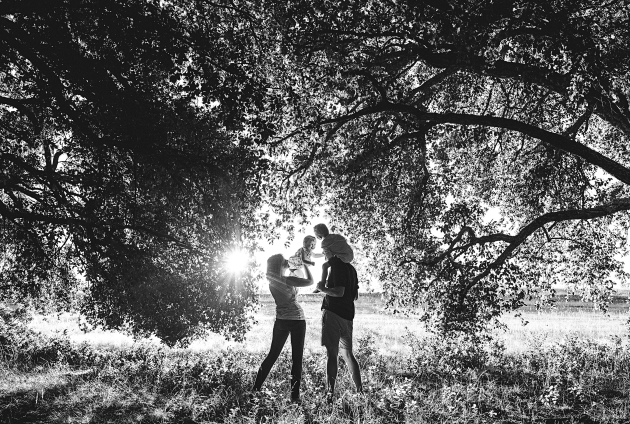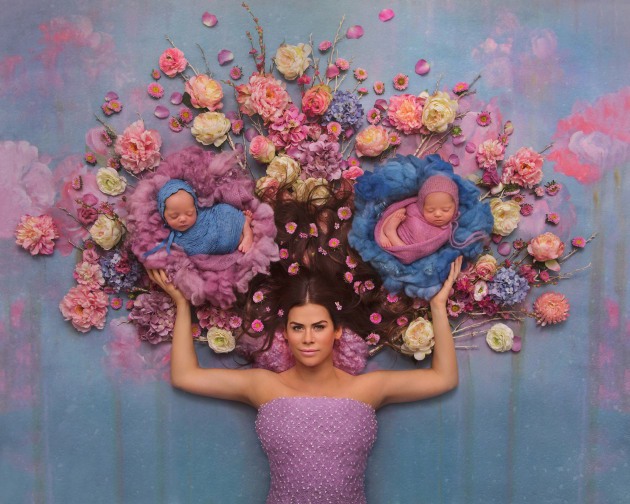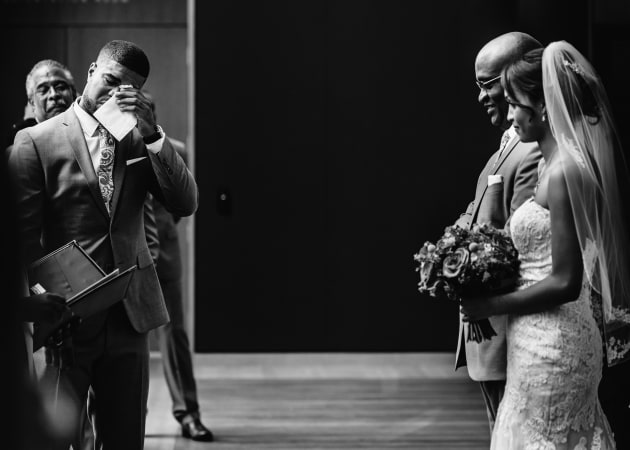The Year in Review - Wedding & Portrait

Over the last 12 months, the number of photographers entering the wedding and portrait market continued to swell. The market remains over-saturated and the divide between the lower and upper ends is growing. Standing out remains a constant challenge. Christopher Quyen spoke with leading photographers to understand just what has changed for the portrait and wedding industry this year.
The size of the portrait and wedding industry is growing. Fast. As more and more clients come to appreciate the true value of good photography, the demand for services increases. But that does not mean that there is now an abundance of work to go around for everybody. Instead, in many instances, the complete opposite appears to be true as pressure to provide lower-cost services plagues a fair proportion of the market, with no shortage of choice for clients.
Much of this is driven by the fact that the barriers to enter the market are now practically non-existent. And Los Angeles-based wedding photographer, Brian Callaway of Callaway Gable has noted that there are too many photographers and not enough jobs around. “All you have to do is buy a camera, learn how to shoot a wedding on Creative Live or the Wedding School, and in a very short amount of time have a basic skill set to get started,” Callaway says. However, he concedes that it doesn’t mean you’re going to necessarily be good from the outset. As a result, the market has become even more competitive, although it does present an opportunity for photographers to rethink how they are going to stand out in this saturated market. But that’s not to say that the most creative, tenacious, and determined won’t still be able to find tremendous success.

Authenticity is everything
Becoming comfortable with the fact that consumers now have more choice than ever before is just one of the realities that portrait and wedding photographers have to contend with. “This can be both exciting and overwhelming for consumers,” says North Carolina-based photographer, Crystal Stokes. “People have more options now than ever, from style of photography, to cost and services provided,” she says. With so much choice, the customer’s journey, experience, and satisfaction with your service must come first. It is the reason why authenticity has become so important when choosing a photographer. Stokes has found that by building relationships authentically, she attracts clients who value her photography. “Be open and authentic, both in person and via social media platforms,” says Stokes. “Continually seek out and build vendor friendships/relationships. And always care.”

Service first, artist second?
Does catering to every little whim of clients mean that photographers have to sacrifice their inner artist? For Brisbane-based photographer, Luisa Dunn, this became something that affected her both personally and professionally. “I was being consumed by a misguided sense of ‘creative ego’. I was looking for validation in all the wrong places, and my client focus was becoming blurred,” says Dunn. “I found myself creating work to please other people (who were not my clients) in a style that was not my own for the purpose of ‘winning approval or a title’ rather than creating from my heart for my clients.”
Ultimately, your artistic style dictates the clients you work with and photographers should create work not to feed their egos, but to be the best photographer and artist possible. Some of the most successful photographers today are those that have stayed true to their vision and their style, and not been dictated to by trends or what their competitors are doing.
The Digital Dark Age
Google’s Vice President, Vint Cerf, warned of a digital Dark Age where current storage technologies will someday become obsolete. Even now we are beginning to see USB ports disappearing from Apple Macs, and we’re seeing a change in deliverables similar to when portrait and wedding photographers had to stop delivering images on CDs and begin adopting USB drives. But this has seen an increase in print sales and online galleries. Hunter Valley-based photographer, Matt Streatfeild has made it a point of explaining the importance of prints to his clients. “There’s no guarantee with digital storage – hard drives fail, USBs can become corrupted,” he says, “An album is not for today, it’s for tomorrow. When your kid asks, “What did Mum look like on her wedding day?” are you going to be searching around for a USB, or will you pull out a wedding album that you can flick to. A wedding album is an experience.”

Photographers like Callaway and Streatfeild have also moved away from giving clients images on a USB to online galleries like ShootProof. Callaway emphasises that photographers should be presenting images in a gallery where clients are able to experience them as if it were a digital version of their wedding album. This can lead to a higher conversion of clients who want albums done. “I do have situations where some couples will contact me six months after looking through their wedding’s online gallery to ask if they can get an album printed,” says Streatfeild.
Be social
Social media has become integral to everyone in 2017. Photographers need it as part of their marketing arsenal, and clients use it to find service providers. Sydney-based photographer, Linda Warlond, has found that personal brand is usually at the forefront of most photographer’s social media strategy. “Wedding and portrait photographers are currently marketing their personalities more, rather than their commercial side,” says Warlond.

Canberra-based photographers, Jeremy Byrnes and Katie Kolenberg, from Heartstory Photography, have found social media and direct messaging a stronger alternative to other means of communication. “We have found it harder and harder to communicate with clients via e-mail and phone: no-one listens to their voicemails anymore and text messages are the best way to get hold of people,” says Byrnes. Communicating with your clients this way can often be more direct and more time-efficient than sending e-mails back and forth.
Facebook and Instagram ads have also weaved their way into photographers’ social media strategy in 2017 with some ads providing a return on investment almost 24 hours after being posted. For Kolenberg, these social media billboards have become their primary form of marketing. “We have found Facebook ads/marketing quite useful, and have used it more in the past 12 months than ever before,” she says.

For Streatfeild, Facebook ads have reaped the most benefit for his business. “As an example, I ran a promo for about $150 throughout August offering a free engagement shoot with anyone who booked a wedding shoot in that month. From that ad I got three or four bookings,” he says. However, the impact of an ad usually happens in the first 24 hours, so you have to be strategic when you post and what your target areas are. Once you nail that down, social media ads can be a powerful tool.
Brand yourself
As people continue to rely more heavily on visual information, it is important to brand yourself and your business to make sure that you stand out from the rest of the market. Brisbane-based photographer, Ken Drake, from Zoo Studios specialises in animal portraits and believes that branding has been a major factor in turning Zoo Studios into a successful business. “There is naturally a strong instinct for photographers to work mainly on their photos, but to run a successful portrait business that can give you an income and be profitable, you have to work hard on your branding, products, customer service and experience, as well as your photography,” says Drake.

Branding helps portrait and wedding photographers stay relevant amongst all the tech-savvy newcomers in the industry as it helps clients identify with you and your work. In 2017, branding isn’t just about having a logo and your colours, “it’s the entire personality of your business and has to be reflected in every bit of marketing, every client contact, and every photo produced,” says Drake, from the language used to making images that clients can emotionally connect with.
#NowTrending
Every year brings new trends. Whether they last for a few weeks, or even years, they have a tendency to impact wedding and portrait photographers, especially under the watchful gaze of the general public. “We do sit there and think whether we’re going to lose relevancy to our clients due to trends, but I feel like we should just stick to our guns and do what we love, and be passionate about what we believe in,” says Callaway.

Visually, we’re still seeing an ongoing trend in darker and moodier images or images that are tinted or desaturated in different tones. “I think moving forward, photographers need to think about how their style affects their client,” says Streatfeild. “We need to be conscious to maintain the image’s integrity that will not just last the next twelve months of the trend, but will last for generations.” Another observation by Stokes is that the resurgence towards shooting on film continues unabated, and even by those who learnt their craft entirely on digital.
Dunn has noted that the number of options when it comes to education for wedding and portrait photographers is booming. “Greater access to quality online education and workshops has greatly impacted on a higher number of skilled photographers entering the market,” she says. No wonder so many new players are entering the market. But unless these new photographers understand the business of photography, and what’s involved, success is likely to remain elusive. “We see an alarming number of photographers working very hard for an extremely low wage,” says Byrnes. Kolenberg adds: “It’s so important to take control of your own life and business, and work your pricing and hours into what suits your needs, otherwise your business becomes a runaway train with no driver or brakes.”
Trends will always come and go, and while they may seem like a good idea at the time, it’s important not to copy or fall too deeply into them. A good portrait or wedding photograph should be timeless, and if you keep emulating and copying, you’ll never find your own voice distinct from the crowd.

People will always want photos
“The portrait and wedding industry is recession-proof,” says Callaway. People will always want photos of their loved ones. People will always be getting married. However, the wave of new photographers entering the market is worrying, and for those already in the market, survival depends on being innovative and keeping abreast of how the market is changing and evolving.
Nonetheless, many photographers believe that the portrait and wedding industry won’t change much in the future. Friends with mobile phones won’t replace you, nor will new technologies like virtual reality cameras or 8K video cameras that can take 20 megapixel frame grabs from video footage. However, no working photographer can afford to be complacent with the view that rapidly developing technology won’t have an impact on their business, or the industry in some way. And at the core is education; for oneself, and for clients. Now more than ever, photographers have to ensure they have an appropriate focus on the latter. As Stokes sums it up, these pictures are “for their children or their children’s children – that weren't there to experience this exchange of emotions and love, but can read it in an image.” The best photographers are, after all, storytellers, not merely picture takers or button pressers.

